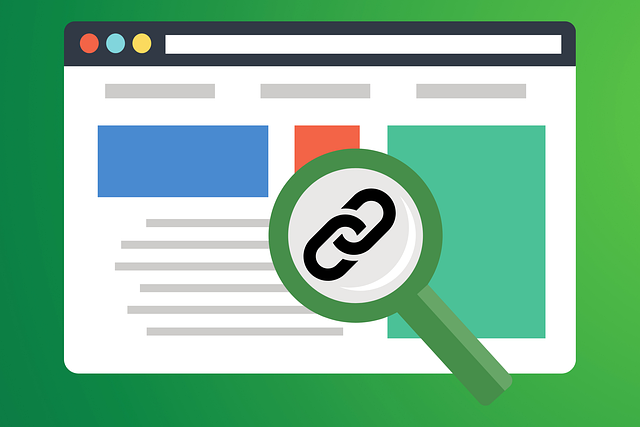Internal linking improves user experience and SEO by creating relevant page connections using descriptive anchor text. Keyword research identifies target audience needs, guiding strategic link placement for targeted traffic. Compelling anchor text balances keywords and natural language, enhancing search engine understanding and user engagement. Efficient strategies, aided by plugins, optimize content hierarchy, boosting topic authority and reducing bounce rates. Measuring performance with tools like Google Analytics refines the strategy based on user behavior insights, ensuring logical links and SEO success.
Internal linking is a powerful strategy to enhance website navigation, user engagement, and search engine optimization (SEO). A well-structured internal link profile can significantly improve your site’s visibility and ranking. This article guides you through the process of utilizing internal linking effectively, from grasping the fundamentals to leveraging tools for optimal results. Learn how to identify relevant keywords, craft engaging anchor text, prioritize user experience, and measure SEO performance through strategic internal linking.
- Understanding Internal Linking Basics
- Identifying Relevant Keywords for Internal Links
- Creating Compelling Anchor Text
- Optimizing for User Experience and Search Engines
- Implementing Tools for Efficient Internal Linking
- Measuring and Analyzing SEO Performance
Understanding Internal Linking Basics

Internal linking is a fundamental component of any SEO strategy, offering a straightforward yet powerful way to enhance your site’s search engine rankings. At its core, internal linking involves using hyperlinks within your website’s content to connect relevant pages. This strategy has numerous benefits for both users and search engines. By creating a network of interconnected pages, you improve user experience by enabling them to navigate your site intuitively, which is crucial for keeping visitors engaged.
For SEO optimization, understanding how to use internal linking effectively is key. When implementing this technique, focus on creating relevant and contextually appropriate links. Ensure that the anchor text used in these links accurately describes the target page’s content, making it easier for search engine crawlers to understand your site’s structure and identify essential pages. This strategic approach to internal linking can significantly improve your website’s SEO performance by increasing its overall authority and readability in the eyes of search engines.
Identifying Relevant Keywords for Internal Links

Identifying relevant keywords for internal links is a crucial step in any effective SEO strategy. Start by understanding your target audience and their information needs. Conduct thorough keyword research using tools like Google Keyword Planner, SEMrush, or Ahrefs to uncover terms related to your content. Focus on long-tail keywords that are more specific and less competitive, as they can drive targeted traffic from search engines.
Consider the context of each page on your website and select internal links that enhance user experience and support a clear site architecture. Use anchor text strategically, ensuring it accurately reflects the linked page’s content. This practice not only aids search engine crawlers in understanding your site structure but also guides visitors to relevant resources, fostering better engagement and longer session durations—key factors for boosting SEO performance, as illustrated in various internal linking for SEO tutorials and optimization guides.
Creating Compelling Anchor Text

Creating compelling anchor text is a crucial part of implementing effective internal linking strategies for SEO. When crafting anchor text, it’s essential to strike a balance between keyword relevance and natural language usage. Start by identifying keywords that accurately describe the target page’s content while keeping the phrasing engaging and reader-friendly. For instance, instead of using a generic term like “click here,” consider using phrases like “learn more about our services” or “read our comprehensive guide.” This not only aids search engines in understanding your link’s context but also enhances the user experience.
Remember that internal linking for SEO optimization isn’t just about keyword stuffing. It’s about providing a seamless, intuitive navigation experience for your visitors while leveraging internal links to boost page authority and facilitate the flow of link equity throughout your site. Following internal linking for SEO tips such as using descriptive anchor text can significantly improve your website’s visibility in search engine results, making it a valuable technique to incorporate into any SEO tutorial.
Optimizing for User Experience and Search Engines

Optimizing your website for both user experience and search engines is paramount when implementing an effective internal linking strategy. By using internal links, you can create a seamless journey for your visitors while also providing valuable signals to search engine algorithms. A well-structured internal linking system ensures that users can effortlessly navigate through relevant content, fostering engagement and reducing bounce rates.
When utilizing internal linking for SEO (Search Engine Optimization), focus on creating a logical hierarchy of pages. Linking related content together strengthens the overall topic authority of your website. For instance, in an internal linking for SEO tutorial, you might link to specific sections within a comprehensive guide, allowing users and search engines alike to understand the depth and breadth of your content. This strategic approach not only enhances user experience but also increases the likelihood of ranking higher in search results, making it a crucial component of any SEO strategy or tips.
Implementing Tools for Efficient Internal Linking

Implementing efficient internal linking strategies is a powerful way to enhance your website’s search engine optimization (SEO) and user experience. By using tools that streamline this process, you can create a robust structure for your site’s navigation. Start by identifying relevant pages within your website that hold value for your audience and link them together in a logical manner. This helps search engines understand the hierarchy and context of your content, resulting in improved SEO performance.
One useful tool is an internal linking plugin or software, which can automate the process of adding links to related content. These tools often suggest relevant pages to link to based on various factors, including keyword relevance, page popularity, and user behavior. Following a comprehensive tutorial or guide on how to use these tools effectively will ensure you optimize your site’s internal linking for SEO without any hassle.
Measuring and Analyzing SEO Performance

Measuring and analyzing your SEO performance is a crucial step in understanding how to use internal linking for SEO. By tracking key metrics, you can gauge the effectiveness of your internal linking strategy. Tools like Google Analytics provide insights into organic traffic sources, user behavior on your site, and conversion rates. This data helps identify high-performing pages and areas that need improvement. For instance, analyzing bounce rate and time spent on page can reveal whether internal links are guiding users to relevant and engaging content.
Using these insights, you can refine your internal linking for SEO strategy. Implement tips such as ensuring a logical flow of links, keeping anchor text descriptive and keyword-rich, and focusing on linking to valuable resources within your site. This iterative process allows you to continually enhance your internal linking for SEO, contributing to better search engine rankings and user experiences.
